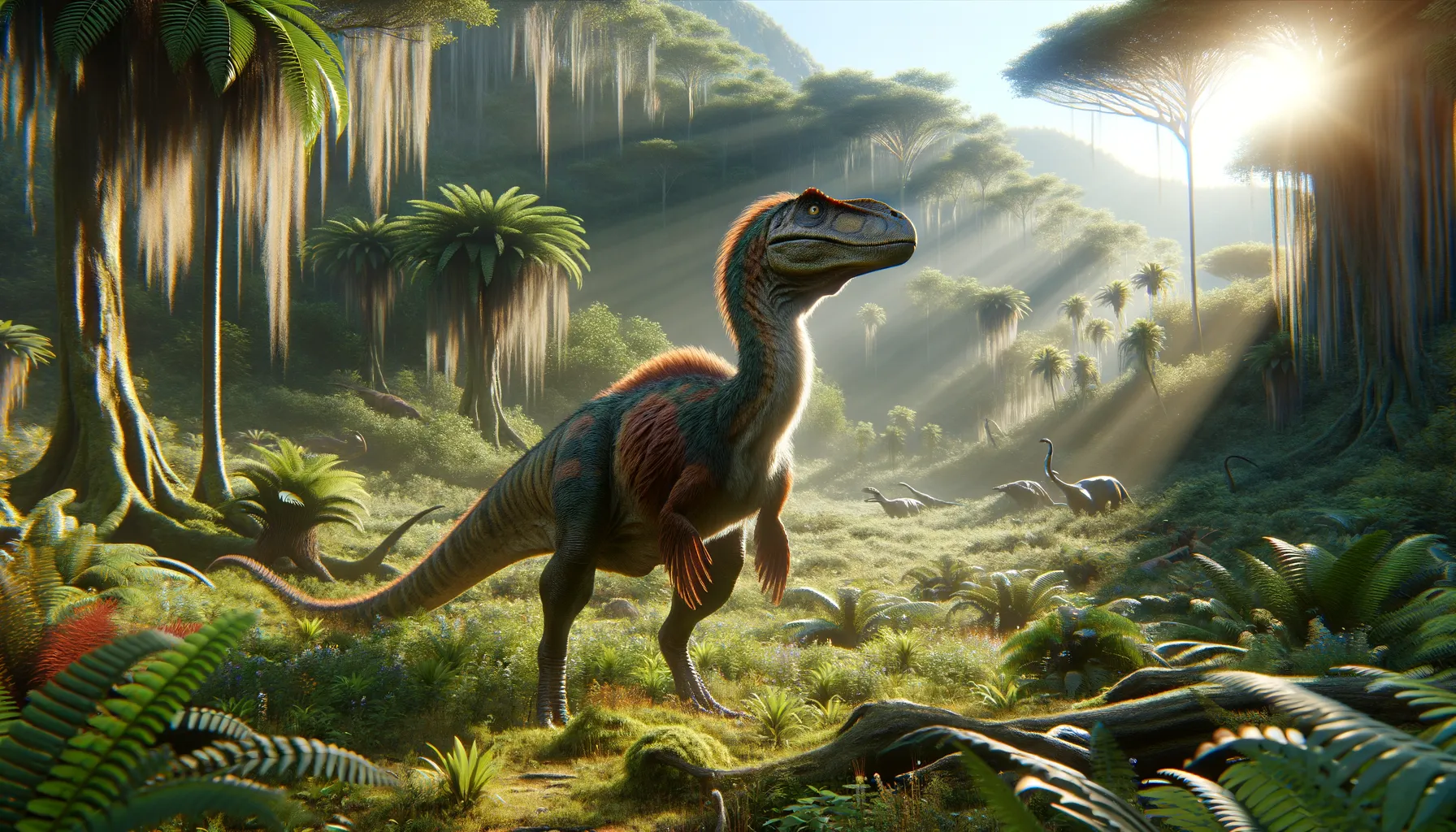
Anzu
Fascinating blend of bird and dinosaur traits!
Period
Cretaceous
Length
Approximately 3.5 meters long.
Height
About 1.5 meters tall at the hips.
Weight
Estimated to weigh around 200 to 300 kilograms.
Anzu, often referred to as the 'chicken from hell,' is a fascinating dinosaur that captured the interest of paleontologists and enthusiasts alike. Living around 66 million years ago during the late Cretaceous period, this theropod had a unique appearance with features resembling both modern birds and prehistoric reptiles. Its discovery has provided significant insights into the diversity of late Cretaceous ecosystems and the evolutionary pathways of feathered dinosaurs.
Diet
Anzu was an omnivore, meaning it had a varied diet. It likely fed on a combination of plants, small animals, and perhaps eggs, using its sharp beak and teeth.
Hunting
While not a top predator, Anzu may have scavenged or hunted small prey. Its long legs suggest it could have been adept at quick pursuits, catching small, agile animals in its environment.
Environmental challenges
Living in a diverse ecosystem, Anzu faced both climatic changes and competition for resources. The dynamic environment of the late Cretaceous, with fluctuating temperatures and varying food availability, meant that Anzu needed to adapt constantly. Additionally, emerging new species would compete for similar resources, posing a constant challenge for survival.
Speed
Anzu was likely a fast runner given its long legs.
Lifespan
Lifespan estimates are unclear but possibly around 20 years.
First discovery
First discovered in the Hell Creek Formation, USA.
Fun Facts
- Anzu is often nicknamed the 'chicken from hell' because of its bird-like appearance and unusual features.
- Anzu lived around 66 million years ago during the late Cretaceous period, just before the dinosaurs went extinct.
- This dinosaur was about 3.5 meters (11 feet) long and weighed between 200 to 300 kilograms (440 to 660 pounds), similar to an ostrich in size.
- Anzu had a beak, a crest on its head, and a long tail, combining features of both birds and traditional dinosaurs.
- Fossils of Anzu were first discovered in the Dakotas, USA, in a region known as the Hell Creek Formation.
- Despite its bird-like appearance, Anzu was a theropod dinosaur, a group that includes both the mighty T. rex and modern birds.
- Anzu likely had a varied diet, possibly eating plants, small animals, and even eggs, making it an omnivore.
Growth and Development
Anzu likely experienced rapid growth during its juvenile stages. Its development would have involved significant changes in size and physical features. The presence of feathers suggests that young Anzu might have required parental care for thermoregulation.
Habitat
Anzu inhabited lush floodplains, rich with vegetation and diverse fauna. The Hell Creek environment included areas with rivers and forests, providing a variety of food sources. Such habitats would support both land-dwelling and aquatic life, offering numerous ecological niches.
Interaction with other species
Anzu likely shared its ecosystem with other dinosaurs, small mammals, and reptiles. It would have needed to navigate relationships with both competitors and potential predators. The presence of such diverse life forms would have encouraged Anzu to develop social strategies and varied survival tactics.
Natural lifespan
In its natural habitat, Anzu might have lived up to 20 years.
Reproduction
Anzu likely laid eggs, potentially engaging in some form of nest-building behavior. Fossil evidence of similar species suggests possible parental care, with adults protecting or nurturing the hatchlings. Eggs would have been incubated naturally, taking advantage of the environmental warmth.
Social behaviour
While direct evidence is scarce, Anzu may have exhibited some social behaviors, especially in caring for young. Communication through visual displays using its feathers could have been part of its interaction. Small groups or family structures might have been common.
Fossil locations
Fossils of Anzu have been primarily found in North Dakota and South Dakota within the Hell Creek Formation. These discoveries have offered significant insights into the biodiversity of the late Cretaceous in North America. Detailed studies of the fossil sites continue to reveal new information about its existence and environment.
